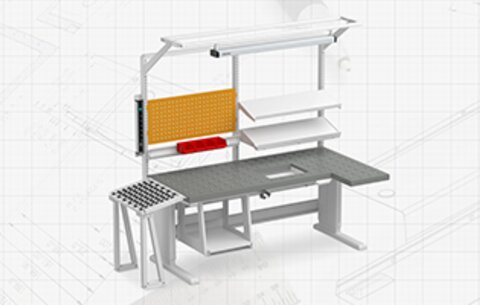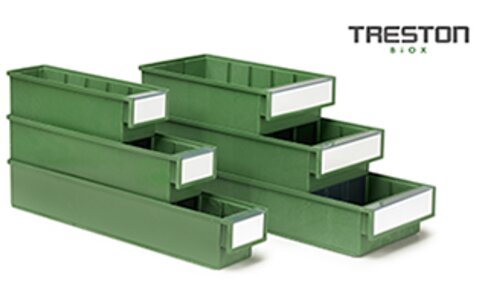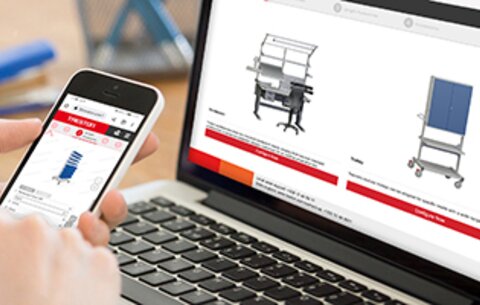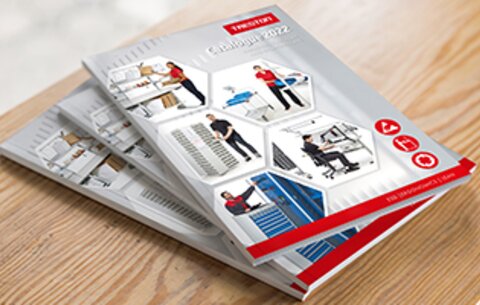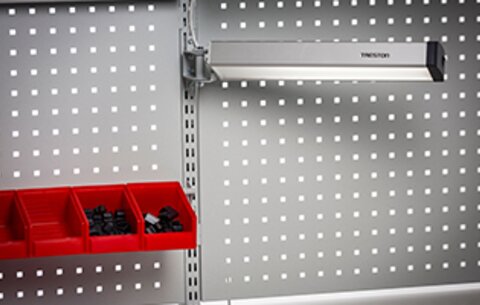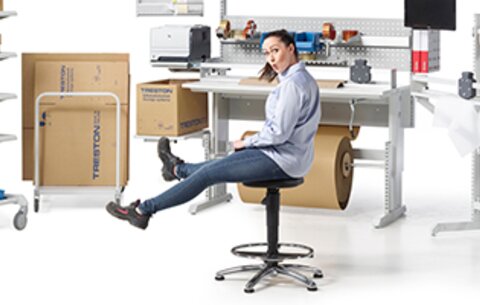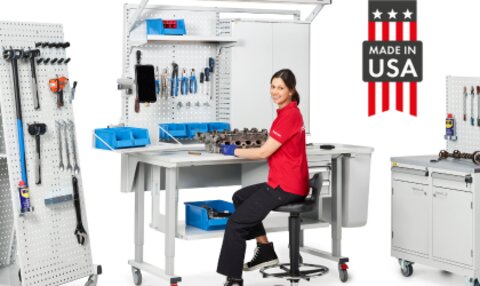

9 Important Considerations When Selecting a Cart

Carissa Harris
Carissa Harris is the Marketing Communications Director for Treston Inc.
Selecting the right cart should not be a complicated process, but there are certain considerations to take into account to ensure you get the best possible cart for your needs. Explore these nine questions to determine whether or not a specific cart for sale at Treston is the right fit for your workplace and your workers.
Top 9 Cart-Shopping Questions
While you review these questions, we encourage you to apply them as you explore our online Carts Inventory.
- Why do you need the cart?
What is its purpose? Are flexibility and easy reconfiguration important features of the cart? If you have a fixed task and fixed need for the cart, a specific cart for that need will most likely be the best solution for you. But if you need a cart that can be easily adapted to changing needs and production processes, choose a cart that has a modular structure, a wide range of accessories, and good ergonomics, which will help you flexibly adapt the cart to a multitude of tasks. - What are the objects being handled on the cart? Are you moving lightweight boxes of the same size and weight or bulky equipment that can differ in size and weight? Are you carrying several different items or one specific item like SMD reels? The weight and shape of the objects handled determine the load capacity and shelf and work surface size of your cart. If the size of handled objects varies, select a height-adjustable work surface and/or shelves to ensure proper ergonomics no matter what size of objects you handle. Tilted shelves improve access and handling of objects, as it enables you to work from your power zone.

- How are the objects handled? Are they sorted or unsorted? Can you stack them or are they loose? Especially for unsorted and loose objects, it is better to equip the cart shelves with edges and/or rubber mats, to ensure the goods do not fall over when moving. Remember though that shelves with edges make it more difficult to handle, lift and lay down heavy objects. Another possibility is to use a caged cart, where the side walls of the cart are at least partially closed in order to help keep objects in place. Mesh panels are a good option for this: they allow visual inspection and keep the construction light.
- What kind of working environment is it? Do you have to enter doors with the cart? How wide are the walkway spaces? If you have to move through doors in different workspaces and/or long distances within the space, checks the walkway and door widths to ensure sufficient space.

- What type of casters should I have? A quality caster is of the appropriate size in relation to the working environment and purpose of the cart. Casters have a big effect in minimizing the start forces needed to get the cart moving as well as in reducing the rolling resistance and therefore play an important role in ensuring proper ergonomics.
- How about handles? Carts that are moved around a lot and transported for longer distances should be equipped with at least one handle, to make handling, pushing and pulling easy, effortless and ergonomic. Vertical handles are considered the most optimal, as every sized worker is able to grasp the handles in their unique power zone. Preferred handle height is between the shoulder and knuckle height of the worker, optimizing the force applied for pushing and pulling. The optimal shape for handles is cylindrical and smooth, which allows the best power grip with straight wrists.

- How often is the cart used? If you have a cart in active everyday use, invest in a high-quality, reliable, and durable cart with high-quality casters. This might be a more expensive initial investment, but in the long run, a high-quality cart will pay for itself with its long lifetime and flexibility in use.
- What do the people using the cart in their work think? They have the best hands-on experience and can give valuable input on the required features, such as size and load capacity, as well as on the accessories needed to perform the work ergonomically and efficiently. Knowing your loads helps you to buy equipment of appropriate capacity.

- How ergonomic is the cart? As a quick ergonomics check, make sure the handles, work surfaces, and accessories are easily height-adjustable to adjust to the worker and task at hand to ensure proper ergonomics. If your goal is to ensure efficient processes and ergonomic working conditions, start by selecting the correct type of cart for the task and then orientating all workers with the physical aspects and best working techniques for the specific task at hand. No matter how fancy the features of your cart, if your workers use bad techniques while performing their tasks with the cart, you are sure to increase the risk of injuries and create inefficiency in processes.
Find the Right Cart Online with Treston Today
Use our website's Cart Selector Tool to make sure the cart you choose fits all nine of our mentioned criteria. If you have any questions during the cart shopping process, be sure to contact us and we'll happily assist you.

